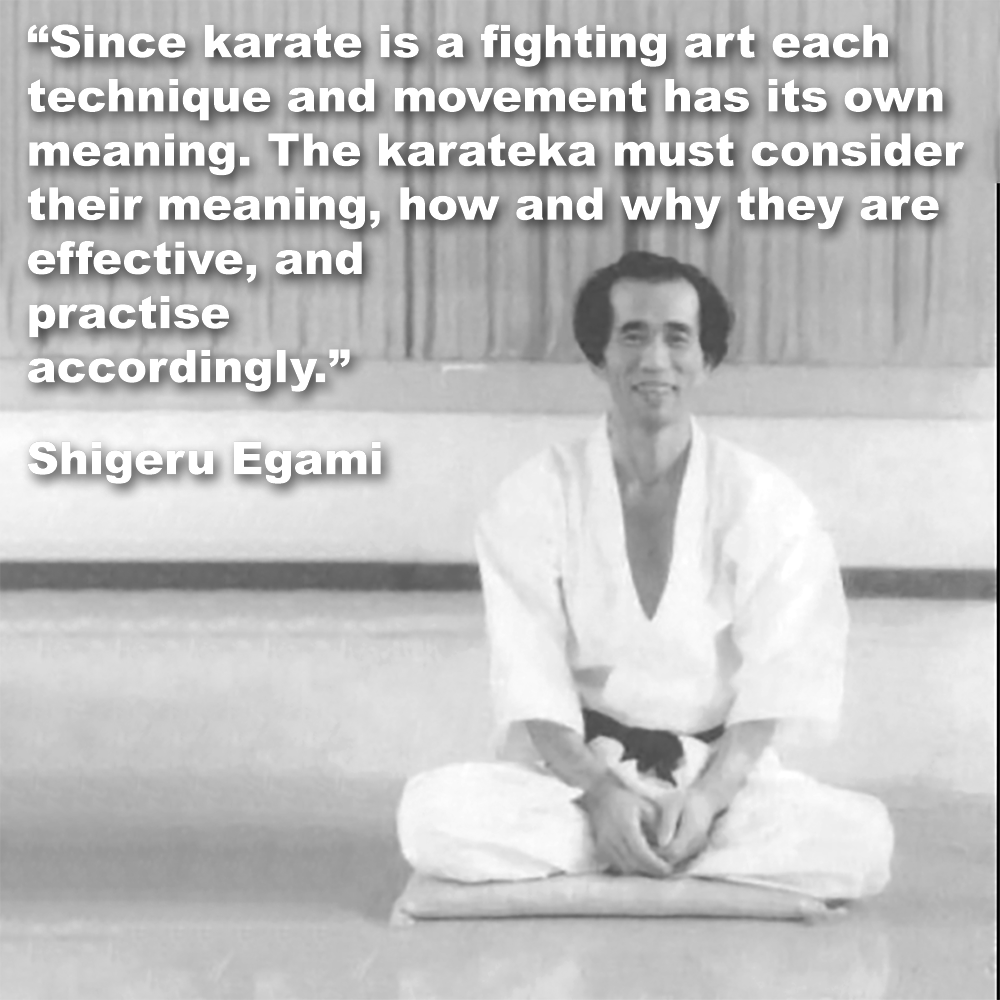
(Approx 1 minute 50 second read)
“The techniques should not be practised simply so they can be performed in the kata. Since karate is a fighting art each technique and movement has its own meaning. The karateka must consider their meaning, how and why they are effective, and practise accordingly.” Shigeru Egami – ‘The Heart of Karate-Do.’
.
There are no hidden moves in kata, there are just parts you understand…and parts you don’t understand.
.
When people don’t understand something, they need to come up with an explanation, and most of the time that explanation doesn’t make much sense, or at the very least, is not very practical.
.
This misunderstanding highlights a significant issue in how karate has evolved. The modern sport-oriented type of karate, overlooks the original, raw, and practical self-defense techniques that were central to Okinawan karate. These techniques have been removed or were not shown in the first place.
.
In essence, there are no secret techniques. Only untrained ones.
.
The idea of hidden techniques in kata is a romanticized notion, one that suggests ancient masters concealed deadly secrets within their kata, waiting for the worthy student to unveil them. While this narrative is appealing, it misses the core truth: the effectiveness of karate lies not in hidden secrets but in diligent practice and a deep understanding.
.
Kata is a living repository of martial knowledge, passed down through generations. Each movement, each transition is a lesson in itself. The so-called ‘secrets’ are actually applications of basic principles, often misunderstood because they require a higher level of comprehension and practical experience.
.
The shift towards sport karate has contributed to this misconception. In the quest for medals and trophies, the focus has moved towards athletic performance, speed, and aesthetics. While this has its merits, it often neglects the gritty, practical aspects of karate that are essential for real-world self-defense. The original intent of karate as a means of personal protection becomes obscured, leading some to believe that true combat techniques are hidden away.
.
To truly understand kata, you have to look beyond the surface. This requires a mindset of curiosity, patience, and a willingness to delve deep into the principles behind each movement. It is not enough to perform kata mechanically; you must explore the ‘why’ and ‘how’ of each technique. This exploration often involves testing the techniques in a variety of scenarios, understanding their applications, and refining them through practice.
.
The idea of hidden techniques in kata in my opinion is a myth born out of misunderstanding. The path to proficiency is diligent training, continuous learning, and understanding the fundamental principles.
